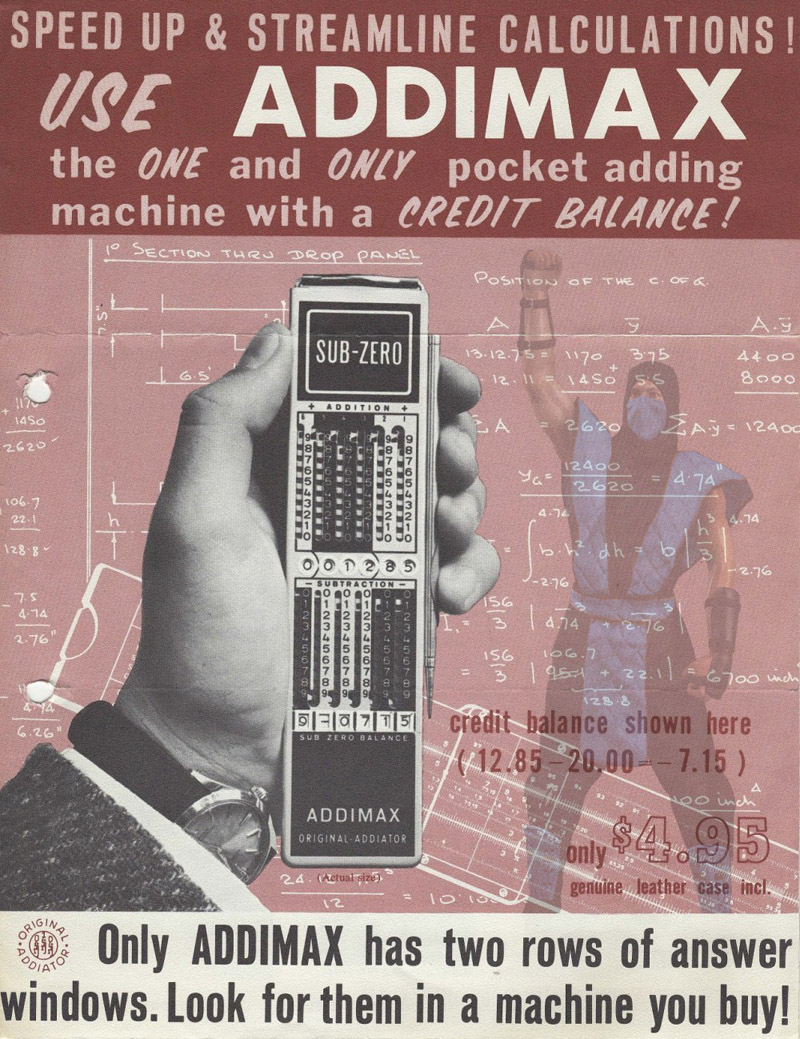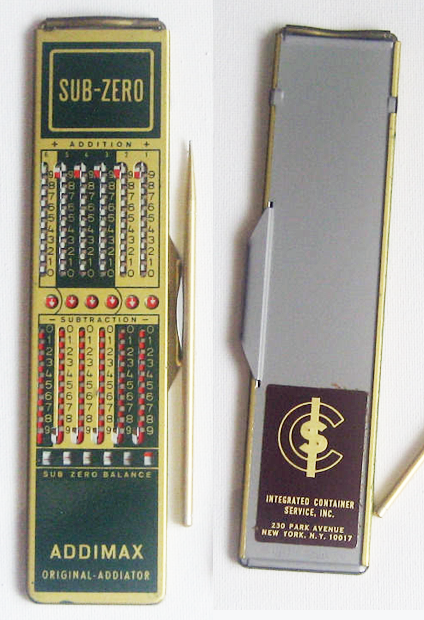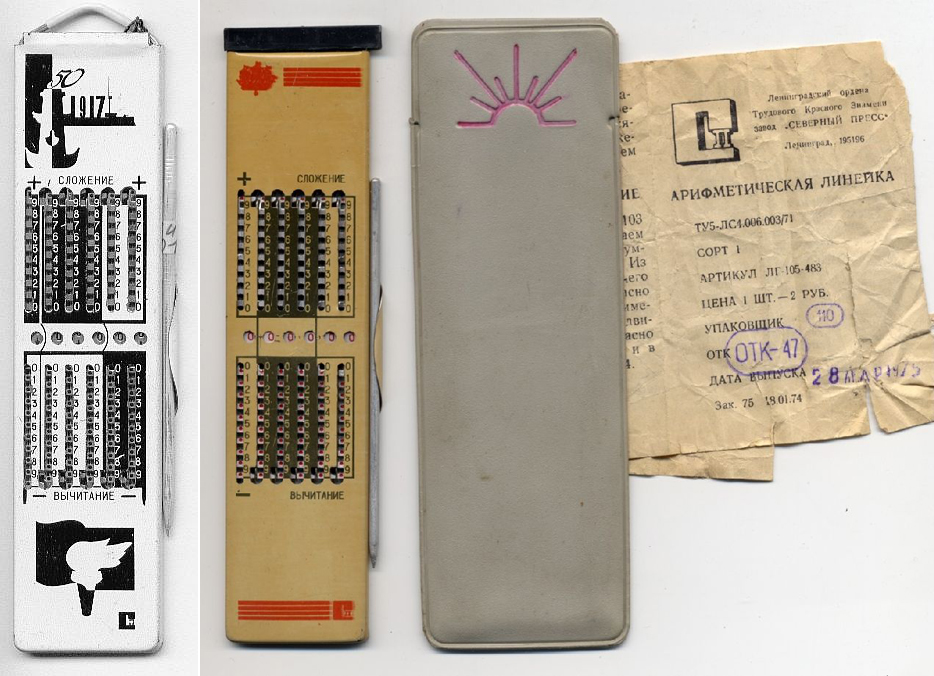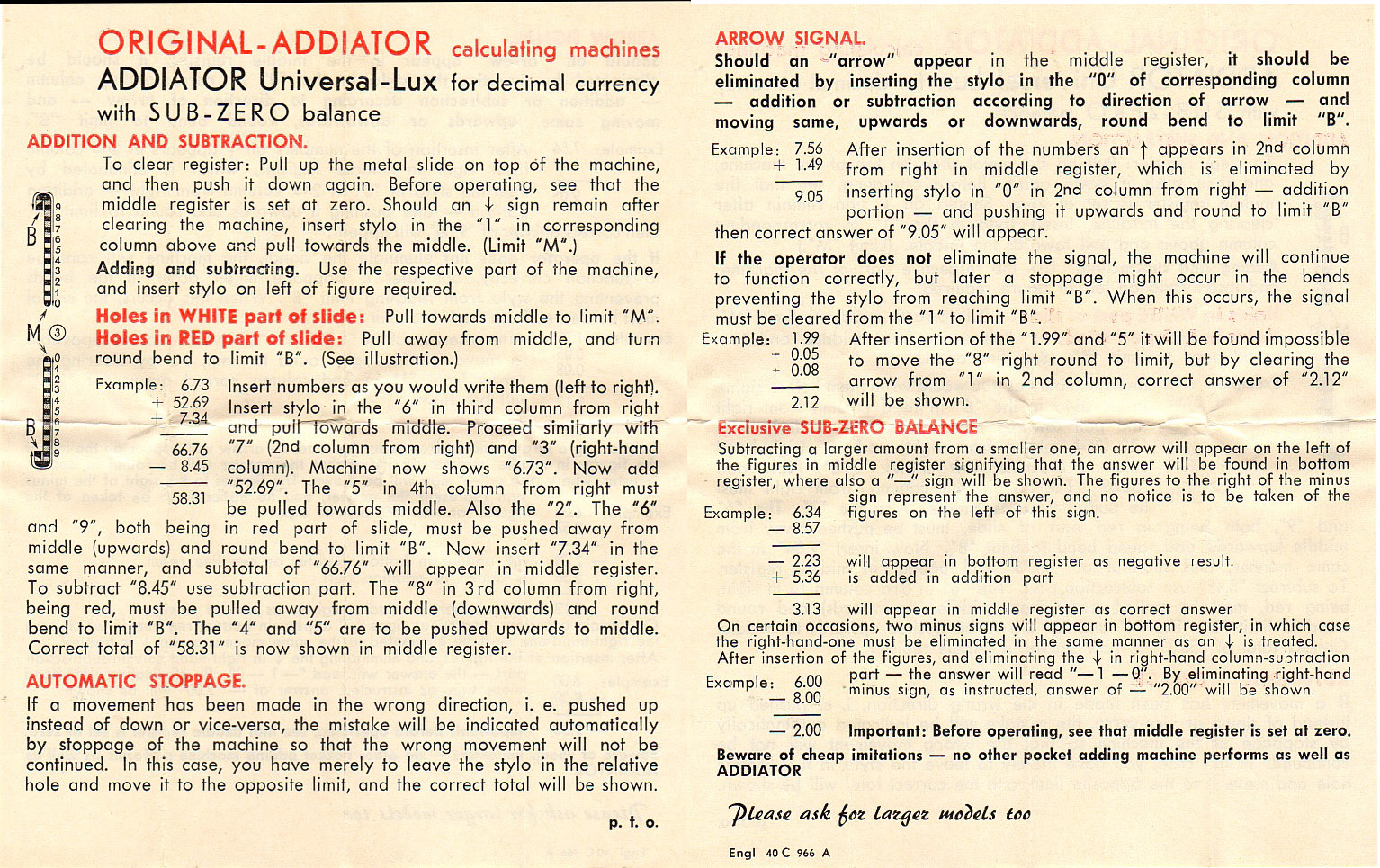Sub-Zero: an antique mechanical calculator. How to use it (with greetings from the 18th century)
A surprisingly elegant machine that has come down to us from those ancient times, when not that the Internet did not exist, - there were not even computers yet. Several characteristics of Sub-Zero, which at one time were emphasized by the marketers who promoted it: (1) works with numbers ± 999999; (2) adds and subtracts in seconds; (3) never wrong; (4) amazingly easy to use; (5) works silently; (6) made of high quality materials that meet German standards; (7) does not wear out. Created to live long.
So what is this machine? How does she perform calculations? What is her filling? How to use it for addition and subtraction? And anyway, who came up with it? Read all about it below.

This masterpiece of ancient digital mechanics has other advantages that it compares favorably with modern digital electronics: (1) eternal battery charge; (2) flicker-free screen; (3) does not require maintenance; (4) starts with a flick of the wrist (automatically, as soon as you take it out of the case); (5) 100% protection against hackers. A joke, of course, but as they say in every joke there is some joke.

Below is a detailed description of what Sub-Zero consists of and how it works. But before reading the article further, it will be useful to “play” with the flash version of a similar mechanical calculator (link here ), although everything is in German. Because when you describe the principle of Sub-Zero on your fingers, the explanation sounds rather complicated. But when you work with a lively mechanical calculator, everything turns out to be intuitive. So if you, dear reader, do not have experience with mechanical calculators of this kind, it will be useful to postpone reading the article for some time and play with the flash version of the calculator.

What is Sub-Zero stuffing?
Sub-Zero consists of three components: 1) one-piece metal body with six moving toothed strips inside; 2) a pencil with the help of which numerical values are given; 3) handle to reset the registers to 0.
- On the Sub-Zero case, numbers are drawn and openings are provided for access to six serrated metal strips and for viewing the contents of the two registers.

- The six serrated metal strips are the moving mechanical elements of a calculator. Figures are drawn on these strips. By means of them, the values of registers are set and arithmetic operations of addition and subtraction are performed.

- In the middle of the case and at its base there are two sets of six holes, through which the numbers printed on the jagged strips are visible. In upper case (i.e. in the middle) positive values are displayed, in lower case negative ones.
- The upper part of the calculator is used for addition, and the lower - for subtraction. Sometimes an arrow is displayed in one of the registers. This means that the answer must be looked at in another register.
How does Sub-Zero perform calculations?
- Through the holes in the body of the calculator, you can see the teeth of metal strips (strips with numbers), painted in white and red. If the number to be entered is opposite the white part of the toothed strip, the pencil should be moved to the middle case ; if opposite red, then the pencil needs to be moved from the middle register .
- Calculations are performed sequentially — one column of numbers at a time (i.e., one toothed strip at a time). The first column on the right is a “one”. The second - "tens", etc. If necessary, you can follow other representations: for example, take the two right columns as two decimal places.
- Moving down the toothed strips (using a pencil) leads to addition; and up - to subtract. If the result of adding two digits turns out to be less than ten (or the result of subtracting one digit from another turns out to be greater than zero), then the principle of Sub-Zero is obvious.
- The most interesting thing starts when the result is more than ten when adding two digits (or a negative result is obtained when subtracting). In this case, Sub-Zero makes the transfer to the next bit column (the one on the left). The way in which the transfer mechanism to the next digit is implemented is shown in the figure below (see the green arrow).

- Here, the number “6” has already been placed in the middle register, and in the figure the green arrow shows how the number “7” is added to it. The pencil here is not just pulling up the jagged strip, but also wraps itself along the upper curve to the left; thanks to this twisting, the pencil hooks on the adjacent left toothed strip, with the result that the unit is automatically added to the next column. The body of the calculator is designed in such a way that, according to this principle, only one unit can be added to the left-standing category. Not more.
Reset calculator registers
- To reset the registers to zero (this should be done before each new calculation), you should pull out the metal handle located at the top of the calculator, and then return it to its place.
- If after a reset in some digits of the middle register, a down arrow is displayed (this will always be the case when the result of the previous calculation is negative), you will have to work with an additional pencil: insert a pencil opposite the unit of the corresponding column (in the upper part of the calculator), and drag the pencil to zero .
- The principle of operation of the resetting handle is shown in the following schematic figure. This scheme, however, was drawn for another mechanical calculator, but in Sub-Zero the reset works on the same principle.

Instruction: addition
- Consider the following example: "17 + 25". To solve it, we first put the number 17 in the middle register, using the upper part of the calculator. Everything is simple here. The result should be as shown.

- The direction of movement of the pencil (to add 25) depends on the color of the teeth on the strip, which is drawn opposite the number we need. If the clove is white, pull the strip to the middle case; if red - from the middle register. Since the "two" is in front of a white tooth, we pull its strip to the middle case. The register should look like in the figure (the number 20 is added to the original number).

- Go ahead. Since the number “five” is opposite the red clove, the pencil needs to be stretched from the middle register to the stop and with inversion. Now we see that the value of the register has become 42.

- After completing the calculation, pull the reset handle out to the stop to reset the result.
Instruction: Subtraction
- Consider the following example: "352-1071." To solve it, we first put the number 352 in the middle register, using, again, the upper part of the calculator.
- Then we put the number –1000 in the lower register, using for this the lower part of the calculator (we specify only the digit that the fourth is on the right). As a result, the registers will look like the figure below.

- Here you can immediately notice two important points. (1) A down arrow is displayed in upper case. She points out that the final result is in lower case. (2) The lower case value is “–648”, i.e. 352 - 1000.
- The following steps are necessary to complete the calculation: 1) in the "hundreds" column, nothing needs to be moved, since we have "0" there; 2) insert a pencil between the teeth opposite the “seven” and (since the seven is in the red zone), move the pencil down to the stop, and with a turn; 3) insert a pencil between the teeth opposite the “unit” and (since the unit is in the white zone) drag the strip up to the stop. As a result, the lower register will have a value of –719.

- After completing the calculation, pull the reset handle out to the stop to reset the result.
Who invented mechanical calculators of this kind, and when did they appear?
- According to the Germans, this man was their compatriot, Karl Kuber (the founder of Addiator), in the 30s of the XX century.

- According to their version, the basis of a similar mechanical calculator, developed by Russian engineers (was released in 1967 for the 50th anniversary of the Soviet Union), went to the drawings of one of the Additor machines, which were included in the list of trophies taken by the Russians from Germany after their victory in World War II.

- According to the French, the first mechanical calculator of this kind was invented by their compatriot. Frenchman by the name of Tronset. In 1889
- However, there is also a version that the “invention” of Tronset was an alteration of a much earlier prototype, made in 1720. So it seems Sub-Zero goes back to the 18th century.
Here is such an amazing elegant machine from the ancient technical past. Colleagues, does anyone have a Sub-Zero on the farm? Or maybe a similar machine? Please share your impressions and take part in the survey.

Only registered users can participate in the survey. Sign in , please.
